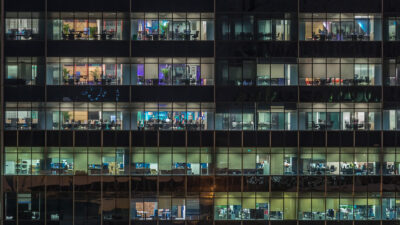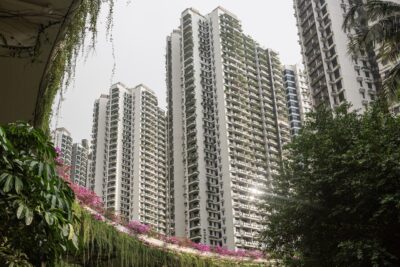Cities within a city: the rise of Manila’s new urban townships

As integrated, mixed-use settlements emerge around the Philippines’ national capital region, the race is on to find the next premier CBD and residential hotspot
Dawn of a new Manila
The rapid growth of the Philippines’ economy in the last few years has been an eye-opening rebirth for the country. No longer branded the “sick man of Asia” by analysts and its own government officials, the archipelago is now considered the best performing growth engine in Southeast Asia.
With the International Monetary Fund’s forecast of a 6.7 percent economic growth in 2015, business confidence in the country is also buoyant. In fact, a recent survey conducted by auditing firm Punongbayan & Araullo, local arm of the Grant Thornton International Business Report, placed the Philippines on top of the 10-member ASEAN (Association of Southeast Asian Nations) – and third in the world – in terms of business optimism.
This dramatic turnaround has boosted job creation, and growth in the domestic office sector, especially in the capital region Metro Manila, where the country’s top business firms and many multinational corporations are headquartered.
Demand for Grade-A office buildings has surged due to a very strong business process outsourcing (BPO) sector with an average overall vacancy rate at the end of 2014 of just 2.13 percent, according to CBRE Philippines. And as the demand for office spaces increases, many districts around Metro Manila, which recently surpassed Mumbai, India as Asia’s top BPO hub, according to global consulting firm Tholons, have welcomed the establishment of new urban townships.

McKinley Hill view at night
Urban townships, which tend to comprise commercial, residential, retail and recreational spaces, are typically associated with self-contained settlements, but the designation can vary; certain areas of the United States, for instance, describe these areas as local government units with a defined population, where economic growth and development is heavily promoted. While this political classification is not used in the Philippines, local developers have come to define urban townships as integrated, sustainable, mixed-use communities, built from the ground up, where people can find work and also buy their own home in the city.
“Given the current infrastructure problems of Metro Manila, homeowners are increasingly inclined to purchase property or even a second (or halfway) home within the vicinity of their work,” notes Yves Luethi, vice president of KMC MAG Group, a Manila-based international associate of Savills. “Since those who typically find themselves in this situation are gainfully employed as expatriates, executives, or young professionals, they are increasingly able to afford high-end residential offerings in the same area.”
One example of a self-contained district is Eastwood City, widely regarded as the Metro Manila’s first urban township. Located in a once remote area in Bagumbayan, Quezon City, the 17-hectare township took an estimated 15 years to plan and build, according to its developer, Megaworld Corporation. It currently comprises 12 luxury condominium towers in addition to several office high-rise towers that host BPO and non-BPO companies.

The Ayala Triangle Gardens acts as a buffer to the various townships that surround the Makati CBD and Bonifacio Global City
“In Eastwood City, we were able to implement our three key elements of an urban township,” says Jericho P. Go, senior vice president at Megaworld. “Firstly, it has a mix of offices, residential condominiums, retail spaces that support those establishments, and learning institutes to make it self-contained; secondly, it is located in a safe area; and lastly, we are the sole developer and operator of the entire property, which is very important for us so we can control common areas, like roads, landscaping, security, traffic, and janitorial services, under a single management.”
The self-proclaimed pioneer of Philippine townships is looking to replicate its Eastwood City success elsewhere in Metro Manila by building several integrated communities inside Bonifacio Global City (BGC), where Megaworld is currently the largest landowner. For its ‘Megaworld at the Fort’ project, the real estate conglomerate has committed to developing ‘live-work-play-learn’ hubs that cater to high-end local and international clients. The group is also not shy to showcase its huge land ownership, allocating 50 hectares for McKinley Hill, 35 hectares for McKinley West, 15.4 hectares for Uptown Bonifacio, and 5 hectares for Forbes Town Centre.
However, tough competition could come from other big-name developers. Federal Land does not have the same land power as Megaworld within BGC but it is targeting similar high-end clients for its own urban township project called ‘Veritown Fort’, a 10-hectare, New York City-themed development that will also include two Grand Hyatt-branded towers: one hotel-and-office building, and one residential tower.

Eastwood City, the first successful urban township in Metro Manila
Located just a few blocks away from BGC, Century City is also hoping to attract Manila’s burgeoning crowd of affluent buyers. Featuring branded luxury residences such as Trump Tower Manila, upscale retail spaces, a state-of-the-art medical facility and Grade-A office spaces at Century Spire and the forthcoming Forbes Media Tower, this “vertical village”, as developer Century Properties describes it, is another symbol of a modern, integrated community that has the potential to become Metro Manila’s next premier business and leisure hub.
While the close proximity of these townships to one another may be seen as counterintuitive , industry experts believe otherwise.
“Proximity is only crucial in the sense that it creates diversity, enhances competition, and provides more offering that reaches out to a larger number of consumers,” explains Sigrid Zialcita, managing director for Asia Pacific research at Cushman & Wakefield. “Property developers have various subsidiaries that target different segments of the market. In addition, there is spillover of developments to benefit the entire area.”
Indeed, the anticipated successes of BGC-based urban townships have inspired other developers to break into the thriving office segment to support their existing residential projects there. Last year, Arthaland Corporation announced the groundbreaking of its premium office project, The Arthaland Tower. Slated for completion in 2017, the tower will complement the company’s acclaimed Arya Residences project, which will welcome its residents next year.

Reclaimed land along Manila Bay provides options for future urban expansion
Meanwhile, in Makati City, the country’s premier financial and business district, Ayala Land is looking to translate its Ayala Center model onto a nearby redevelopment project called ‘Circuit Makati’, located on a former racetrack site. With a budget of PHP39 billion (USD875 million), the developer and its subsidiaries Alveo Land, Ayala Malls and Ayala Land Businesscapes have high hopes for the new entertainment hub: the future success of Circuit’s The Stiles Enterprise Plaza, a two-tower office condominium, could generate further interest in Alveo’s flagship residential condominium project, Solstice Towers, and vice-versa.
But as the scarcity of land, especially in Makati and BGC, becomes a problem in the future, experts predict that more high-rise urban townships will come to dominate the capital’s skyline, especially after the introduction of the ASEAN Economic Community.
“Much of Metro Manila has been redeveloped and the available land suitable for a sprawling mixed-use, residential development is no longer available,” notes Phillip G. Anonuevo, local director for markets at JLL Philippines.
He adds that major developers have the option to embark on industrial areas in Pasig or Quezon City – currently the most searched city in the world, according to property portal Lamudi – to build their townships. “The developers’ high-rise strategy has allowed them to build and sell projects while maximising land value.”

Residents of Century City can shop and relax at the upscale Century City Mallezon
Antton Nordberg, head of research at KMC MAG Group, agrees: “When I look at the map of where these townships are rising, there is nothing left in old Manila and its cities. One factor causing this is that it is almost impossible to consolidate land there anymore for these large scale projects.” He suggests that viable alternatives might arise in reclamation areas on Laguna Lake and Manila Bay, or farther in the north.
“My predictions are in favour of Vertis North in Quezon City due to the high labour pool catchment. It will be the main CBD in the north,” he says. “Also on the top of my list is Bay City, which has a lot of factors that can make it thrive: proximity to ports, Makati and BGC; accessibility to south; and the interesting mix of property types, from casinos to several malls,” referring to Pagcor’s Entertainment City, and SM Development Corporation’s Mall of Asia Complex at the reclaimed Bay City.
As the urban townships segment in Philippines grows further, is Makati’s position as the country’s main financial and business centre under threat?
“Makati CBD will remain as the country’s financial hub as majority of multinational corporations and local conglomerates still prefer to be located in the district,” predicts Cushman & Wakefield’s Zialcita. “The district also has good infrastructure, centrally located within Metro Manila, and is highly accessible which allows it to tap a wide source of labour pool – from Quezon City in the north to Muntinlupa City in the south.
“This CBD is currently undergoing redevelopment, which will stimulate property activity in the area and help it maintain its position as the premier business hub of the country.”
Manila’s next CBDs

CIRCUIT MAKATI
Who’s behind it: Ayala Land; Alveo Land
Live: Solstice Tower One (2018), Solstice Tower Two (2019)
Work: The Stiles Enterprise Plaza West Tower (Q3 2019), East Tower (TBA)
Play: Circuit Makati is one of Ayala Land’s four major self-contained development areas in the city. Positioned to become a commercial and entertainment hub, it is situated at the old Sta. Ana Racetrack and is very close to the main Ayala Center CBD, which is also currently undergoing redevelopment. Entertainment offerings include Circuit Theatre and Circuit Lane, adding to the attractiveness of the 22-hectare community.
Price range: PHP3.8 million (USD85,200) to PHP19.1 million (USD428,200) per condo unit
Why it’s the next premier CBD: “Makati is our crown jewel; it is our commitment for Makati to continue to be relevant,” according to Ayala Land president and CEO Bernard Vincent O. Dy. “Upon full development, Circuit will have 1.4 million sqm of gross floor area for residential, retail, offices, and much more.”

UPTOWN BONIFACIO
Who’s behind it: Megaworld Corporation
Live: One Uptown Residence (sold out, 2016), Uptown Ritz Residences (2017), Uptown Parksuites (2018)
Work: Alliance Global Tower (2016), Uptown Bonifacio Tower (TBA)
Play: Centrally located, the 15.4-hectare Uptown Bonifacio is part of the bigger Megaworld at the Fort project, which also includes Forbes Town Centre, McKinley Hill and McKinley West. Featuring several upscale lifestyle amenities and spaces, it faces the exclusive Manila Polo Club and the Manila Golf Club, and is adjacent to the most exclusive residential villages in Metro Manila, adding to its prestige.
Price range: PHP3 million (USD67,300) to PHP45 million (USD1.01 million) per condo unit
Why it’s the next premier CBD: “It has all the elements of an integrated community, while it also features lifestyle spaces, including malls and retail shops, among others, that cater to the needs of occupants.” says Jericho P. Go, SVP at Megaworld. “All of our developments there make Megaworld the largest landowner in Fort Bonifacio, where we are creating new cities within a city within a city.”

BAY CITY
Who’s behind it: SM Development Corp; Anchorland Group
Live: SMDC’s Shell Residences, Shore Residences and Sea Residences; Anchorland’s Solemare Parksuites Phase 2, Monarch Parksuites (2016), and the nearby Admiral Baysuites (2015)
Work: SM’s E-comCenter (sixth tower, 2019); Anchorland’s ALHI Corporate Center (TBA)
Play: A master-planned ecotourism development project, Bay City is envisioned by the government to become Manila’s own Las Vegas and new tourist hub, strategically located only 25 minutes by car from the Ninoy Aquino International Airport. It has residential, hotel, business, commercial, leisure and entertainment spaces, the most famous of which is the SM Mall of Asia Complex.
Why it’s the next premier CBD: “Bay City is already the emerging entertainment and resort CBD in Manila, given that the area’s location is right next to Pagcor’s thriving Entertainment City,” says Alexander D. Pomento, VP, Investor Relations at SM Prime Holdings Inc. “We believe our complex should benefit from the higher traffic and commercial activities that would materialise in Pagcor’s casino city.”
CENTURY CITY
Who’s behind it: Century Properties
Live: The Gramercy Residences, Knightsbridge Residences (2014), Milano Residences (2015), Trump Tower Manila (2016)
Work: Century Spire (2018), Forbes Media Tower (TBA)
Play: Some of well-known names in fashion, home, real estate, health care, architecture and business, such as Versace Home, Armani/Casa, Trump, GE Healthcare, Daniel Libeskind and Forbes, are present in this powerhouse city centre, complemented by information technology-driven, grade-A office towers, and super high-end retail and lifestyle spaces.
Price range: PHP8 million (USD179,000) to PHP92 million (USD2.06 million) per unit
Why it’s the next premier CBD: “Our vision for Century City is to represent the image of Modern Makati, a vertical village that will bring the best of the world in one place, and at the same time showcase the Filipino’s capability of developing a district with world-class and global sensibilities,” says Terrie Yu, VP for Corporate Communications at Century Properties.

VERTIS NORTH
Who’s behind it: Ayala Land; Alveo Land
Live: High Park Tower One (Q3 2019) Tower Two (Q3 2020), Avida Towers Vita (TBA)
Work: Vertis Corporate Center Towers One & Two (TBA)
Play: Providing a focus for Quezon City, one of the largest metropolitan areas in the Philippines in terms of land area and population, Vertis North is said to create the city’s first true central business and lifestyle district, covering 46 hectares of “vertical park living”, as well as hotel, retail, office, commercial and recreational spaces, anchored by TriNoma mall, with direct links to Metro Manila’s mass transit lines.
Price range: PHP4.1 million (USD92,000) to PHP17.4 million (USD390,400) per condo unit
Why it’s the next premier CBD: “Vertis North is part of Quezon City’s main CBD, which is a 250-hectare development that covers the North, South and East Triangles,” says Jay Teodoro, division manager at Ayala Land. “Its total area is about the same size as Bonifacio Global City. As one of the first developments to rise within the QC’s own CBD, Vertis North is expected to serve as catalyst for the entire city.”

Who’s behind it: Federal Land
Live: Park West (Q4 2015), Central Park West (Q4 2016), Grand Hyatt Manila Residences (Q1 2017), Madison Park West (Q4 2017), Times Square West (2018)
Work: Grand Hyatt Hotel (includes grade-A offices, 2015)
Play: The 10-hectare township property Veritown Fort mirrors New York City’s Upper East Side lifestyle, known to many to be full of charm, grandeur, glamour and art. Residents, workers and visitors at Veritown Fort can shop at the Big Apple Mall, which also continues the New York theme.
Price range: PHP3.5 million (USD79,000) to PHP60 million (USD1.35 million) per condo unit
Why it’s the next premier CBD: “It offers urban conveniences in one unbeatable address, which showcases understated luxury,” Federal Land president Alfred Ty told local media. “And being in a great premier community like Veritown Fort, which is home to the world-class Grand Hyatt Manila Residences and Grand Hyatt Hotel, further adds to its luxurious experience.”
Recommended
Meet the vagabond architect behind India’s housing scene
Vinu Daniel is helping to shake up India’s home building setting
Where Asian real estate stands in a fragmented, warmer world
Asia’s real estate industry faces many and varied challenges as external factors continue to bite
6 sights to see in Singapore’s Marine Parade
Handily located Marine Parade has emerged as a vibrant investment choice in the Lion City
There’s a township dedicated to health and wellness in Malaysia
Property seekers have their health needs catered for at KL Wellness City








